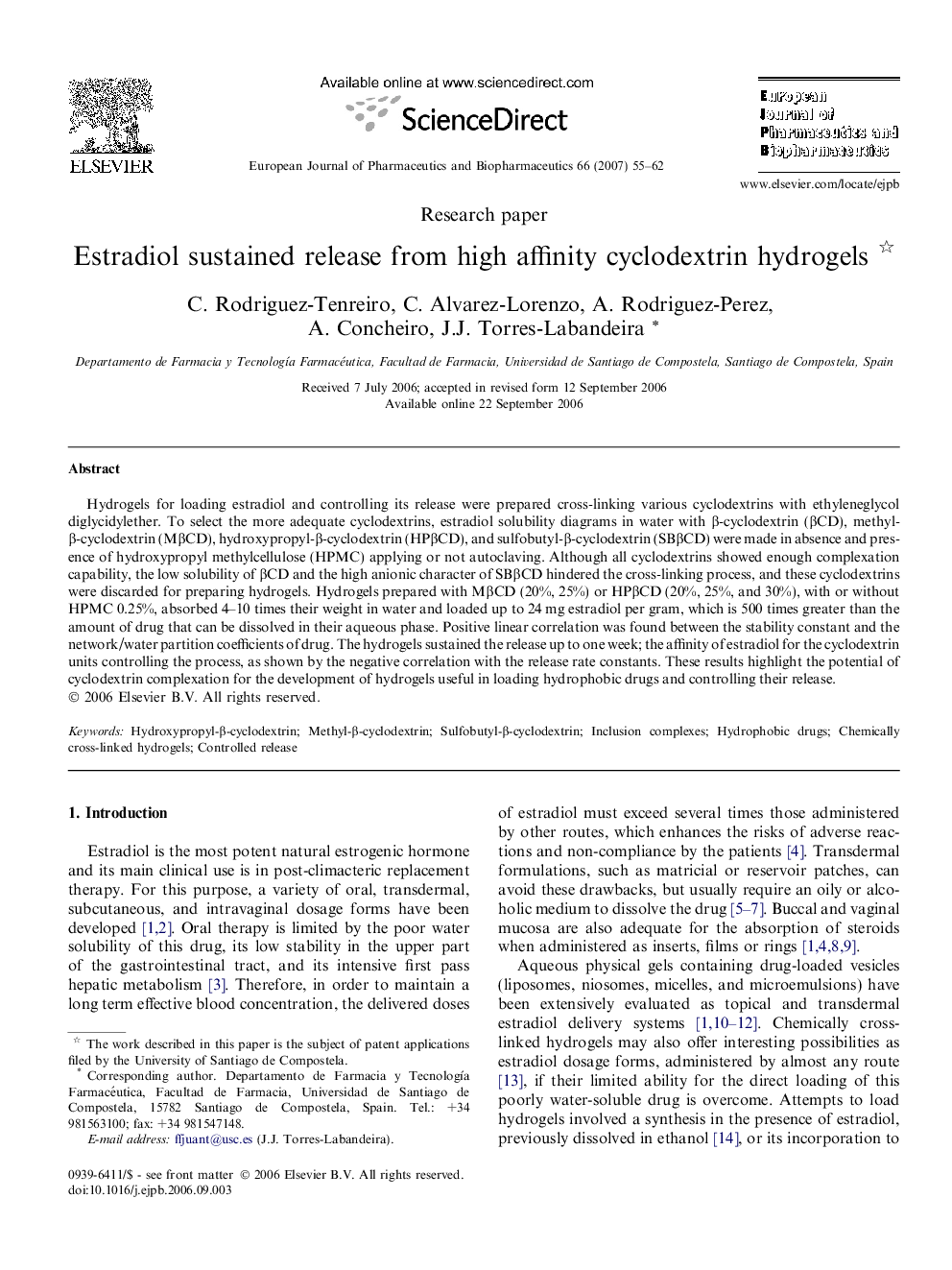| Article ID | Journal | Published Year | Pages | File Type |
|---|---|---|---|---|
| 2084958 | European Journal of Pharmaceutics and Biopharmaceutics | 2007 | 8 Pages |
Hydrogels for loading estradiol and controlling its release were prepared cross-linking various cyclodextrins with ethyleneglycol diglycidylether. To select the more adequate cyclodextrins, estradiol solubility diagrams in water with β-cyclodextrin (βCD), methyl-β-cyclodextrin (MβCD), hydroxypropyl-β-cyclodextrin (HPβCD), and sulfobutyl-β-cyclodextrin (SBβCD) were made in absence and presence of hydroxypropyl methylcellulose (HPMC) applying or not autoclaving. Although all cyclodextrins showed enough complexation capability, the low solubility of βCD and the high anionic character of SBβCD hindered the cross-linking process, and these cyclodextrins were discarded for preparing hydrogels. Hydrogels prepared with MβCD (20%, 25%) or HPβCD (20%, 25%, and 30%), with or without HPMC 0.25%, absorbed 4–10 times their weight in water and loaded up to 24 mg estradiol per gram, which is 500 times greater than the amount of drug that can be dissolved in their aqueous phase. Positive linear correlation was found between the stability constant and the network/water partition coefficients of drug. The hydrogels sustained the release up to one week; the affinity of estradiol for the cyclodextrin units controlling the process, as shown by the negative correlation with the release rate constants. These results highlight the potential of cyclodextrin complexation for the development of hydrogels useful in loading hydrophobic drugs and controlling their release.
